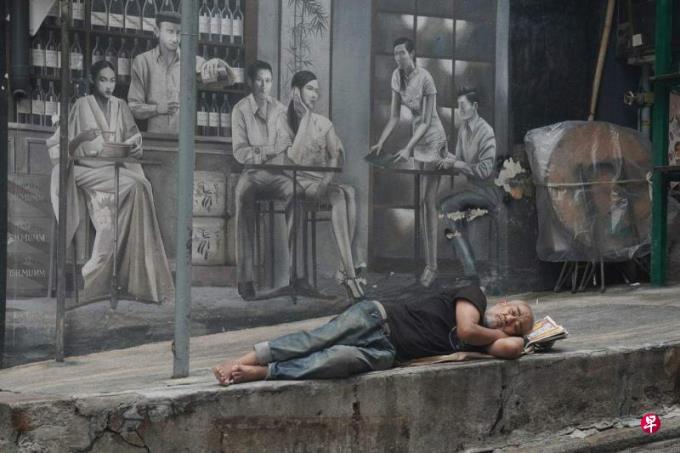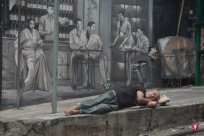
The issue of the rich and poor in Hong Kong in recent years has become more and more serious. A report published by the Poverty Alleviation institution Hong Kong Le Shi on Tuesday (September 19) shows that the poor people in the first quarter of this year have exceeded 1.36 million, and the gap between the rich and the poor has expanded to 57.7More than the highest over the years.
Le Shi described that the issue of disparity between the rich and poor in Hong Kong has sounded alarm on the overall society. It is suggested that the SAR government adjusts the minimum wage each year, promotes living wages, and ensures grassroots revenue.
Living salary refers to the salary received by an employee. In addition to allowing him and family members to solve the needs of basic life, they can also live a decent life.It includes a balanced and nutritious diet, reasonable housing space, appropriate social life, basic learning and medical needs, etc. At the same time, it also includes the reserves of emergencies to ensure the opportunity to flow upward at the grassroots level.
The report of Le Shi is based on the data of the Hong Kong Government Statistics Office from 2019 to 2022 and the first quarter of this year. The monthly income of the residents is divided into the most poverty -stricken, the first is the most poor, the 10th is the 10th, and the 10th is 10th.It is divided into the richest.It was found that the monthly income of the most poor family in the home of 10 % of the residents was only 2,300 yuan (Hong Kong dollars, the same, S $ 401) in the first quarter of this year, and fell more than three minutes from the epidemic. On the contrary, the richest 10 % of the residentsThe home monthly income is as high as 132,600 yuan, an increase of more than 10 % from 2019.
TheReport pointed out that the mid -month income of the overall family in Hong Kong in the first quarter of this year was about 29,000 yuan, which was 1.7%slightly higher than before the epidemic.Based on 50%of the indigenous households of the corresponding scale, the overall poverty rate of Hong Kong in the first quarter of this year reached 20%, that is, more than 1.36 million people were in a state of poverty.In addition, before the outbreak of the crown disease, the gap between the rich and the poor in Hong Kong was 34.3 times; but in the first quarter of this year after the epidemic, the gap was expanded to 57.7 times.
In addition, nearly 210,000 Hong Kong people in the first quarter of this year still failed to get out of poverty, accounting for 6.4%of the employment population.According to industry analysis, the "retail, accommodation and catering services" with the highest proportion of job poverty is 26.6%, that is, one of 10 people is working poverty.
As for the unemployment rate of Hong Kong in the first quarter of this year, more than 110,000 people were unemployed, of which more than 40%were in poverty; 60.4%of poor unemployed people pointed out that they were dismissed or fired by the company, reflecting that grass -roots workers were still in the epidemic after the epidemic was in the epidemic.Unstable employment.More than 57%of the poor and unemployed people have unemployment for two months or more, and 31%have been unemployed for half a year or more.
Huang Shuohong, the director of the project of Hong Kong, Macao and Taiwan, described that the gap between the rich and the poor in Hong Kong has expanded to more than 57 times after the epidemic, which is the biggest gap in history, reflecting that even if the epidemic has passed and the society is restoring, Hong Kong's low -income and high -income families evenEconomic recovery is further polarized. High -income families can benefit from economic recovery, while low -income families have failed to benefit.
She said that the gap between the rich and the poor in Hong Kong has become large, which is related to the reduction of the reduction of grass -roots workers and the minimum wages that cannot catch up with inflation, especially the cleansing and quarantine facilities during the epidemic.It is necessary; and the gradual electronicization of the consumption model has also reduced many grass -roots positions.
Facing the increasingly serious issues of the rich and poor in recent years, the current SAR government emphasizes precision poverty alleviation, and sets up three major target groups such as helping households, single -parent residents, and elderly residents.The Chief Executive Li Jiachao will publish a new policy report next month. A survey issued by the Hong Kong Community Organization Association on Monday shows that as many as 67.1%of respondents want the political report to give priority to land and house problems, followed by medical services, education resources and education resources and education resources and educational resourcesCare for the disadvantaged community.
Deng Fei, a member of the Hong Kong Legislative Council, pointed out in an interview with Lianhe Morning Post that there are many poverty -stricken people in Hong Kong, which is an indisputable fact.He called on Li Jiachao to propose to increase land supply measures in the policy report to solve the residential problems of residents as soon as possible; and to accelerate economic development and provide more positions for grass -roots citizens.
But he said that the most important thing is to solve cross -generation poverty.The Hong Kong Government must put more resources in terms of education and provide upward liquidity space for grass -roots teenagers.
Zeng Gahui, president of Hong Kong Le Shi, described that Hong Kong society was full of recovery, but the problem of disparity between the rich and the poor has become more and more serious.She urged the Hong Kong Government to consider further input of foreign workers, and she should assist at grassroots employment by raising the minimum wage, creating employment, and providing other causes; and adjusting the minimum wages annually to catch up with inflation.
Le Shi also suggested that the Hong Kong Government will pay for the living salary of the workers and announce the salary level every year, so that the capable employers can voluntarily choose to pay the living salary from the grassroots employees.The public sector should also create more elastic jobs, such as the government holding a night market, which can publicly recruit cleaners and venue managers.



